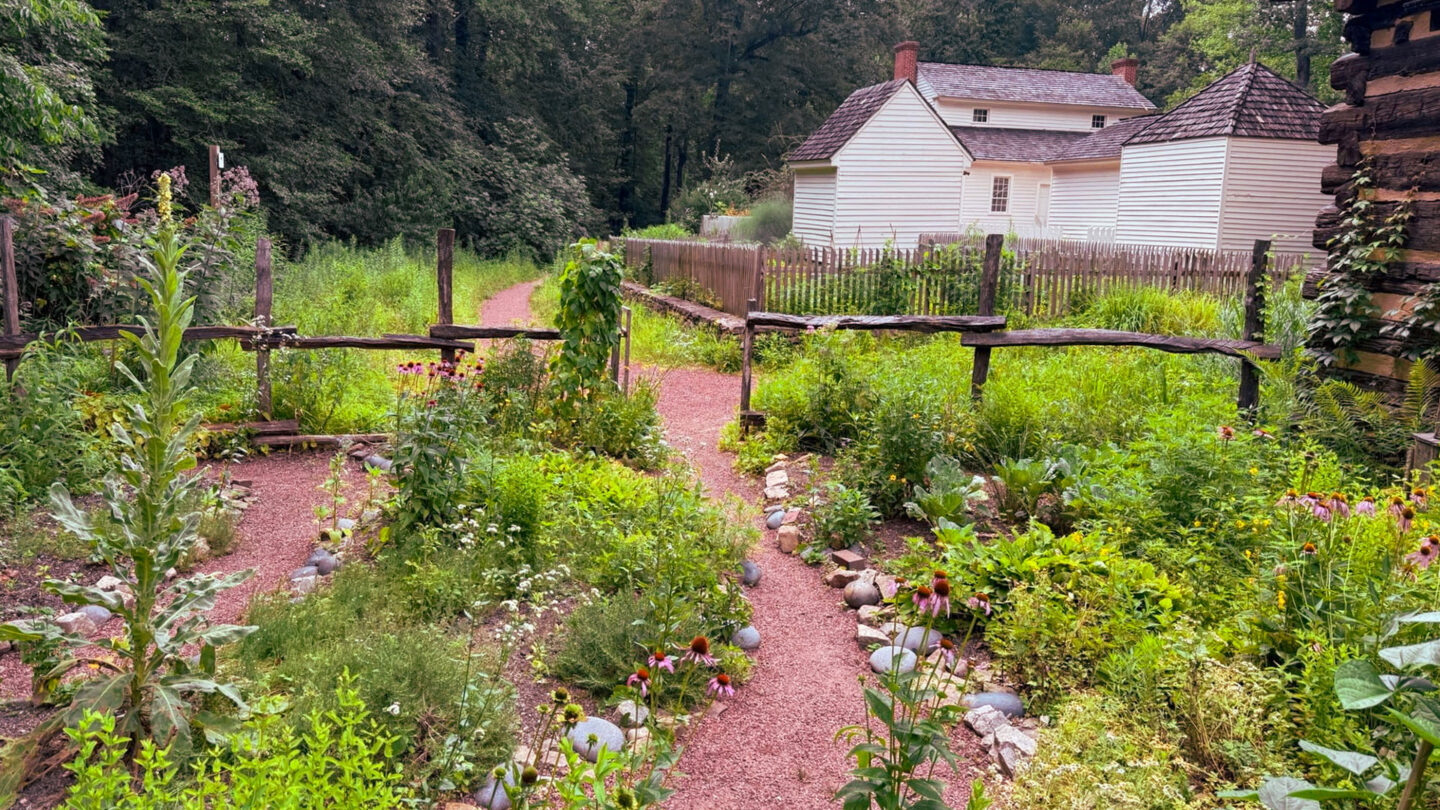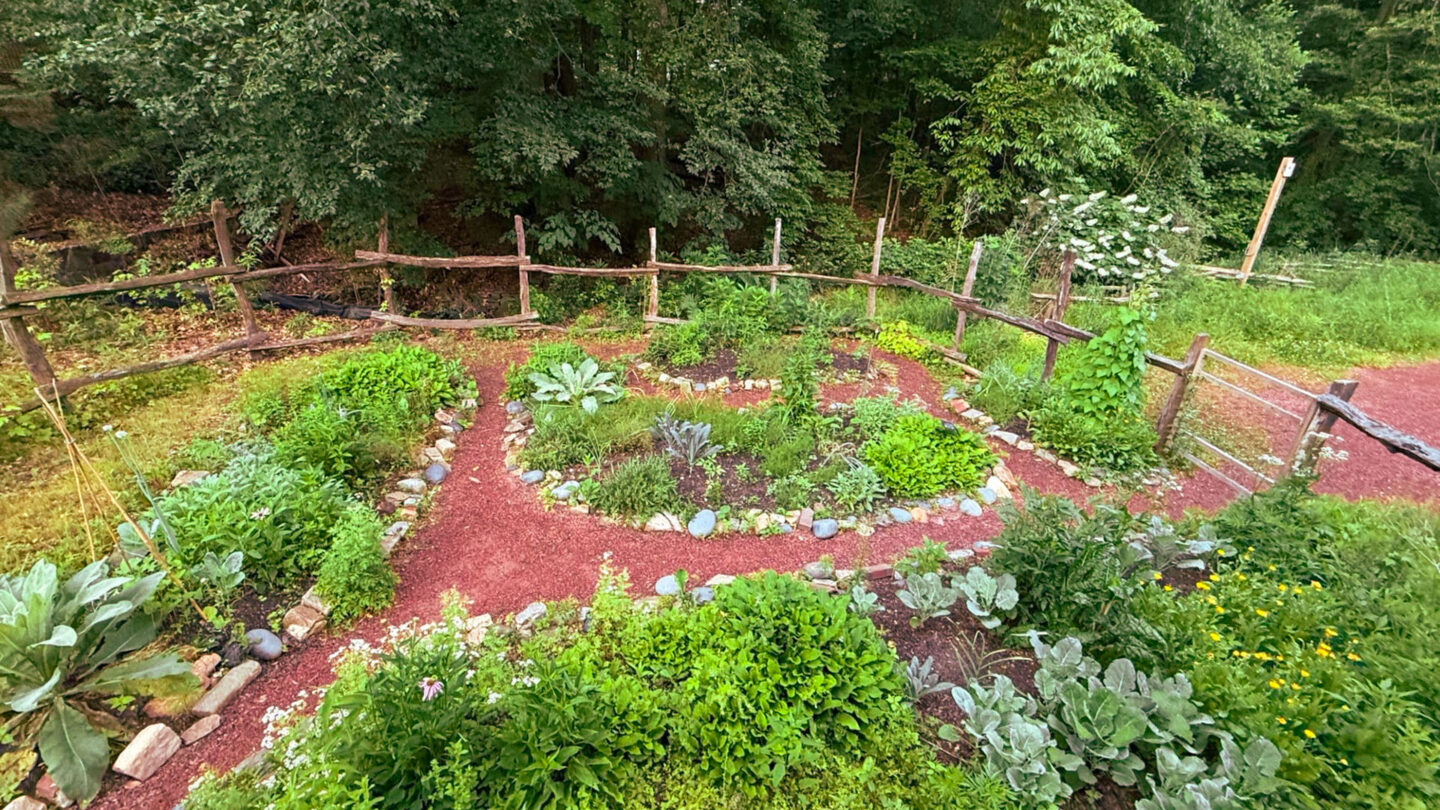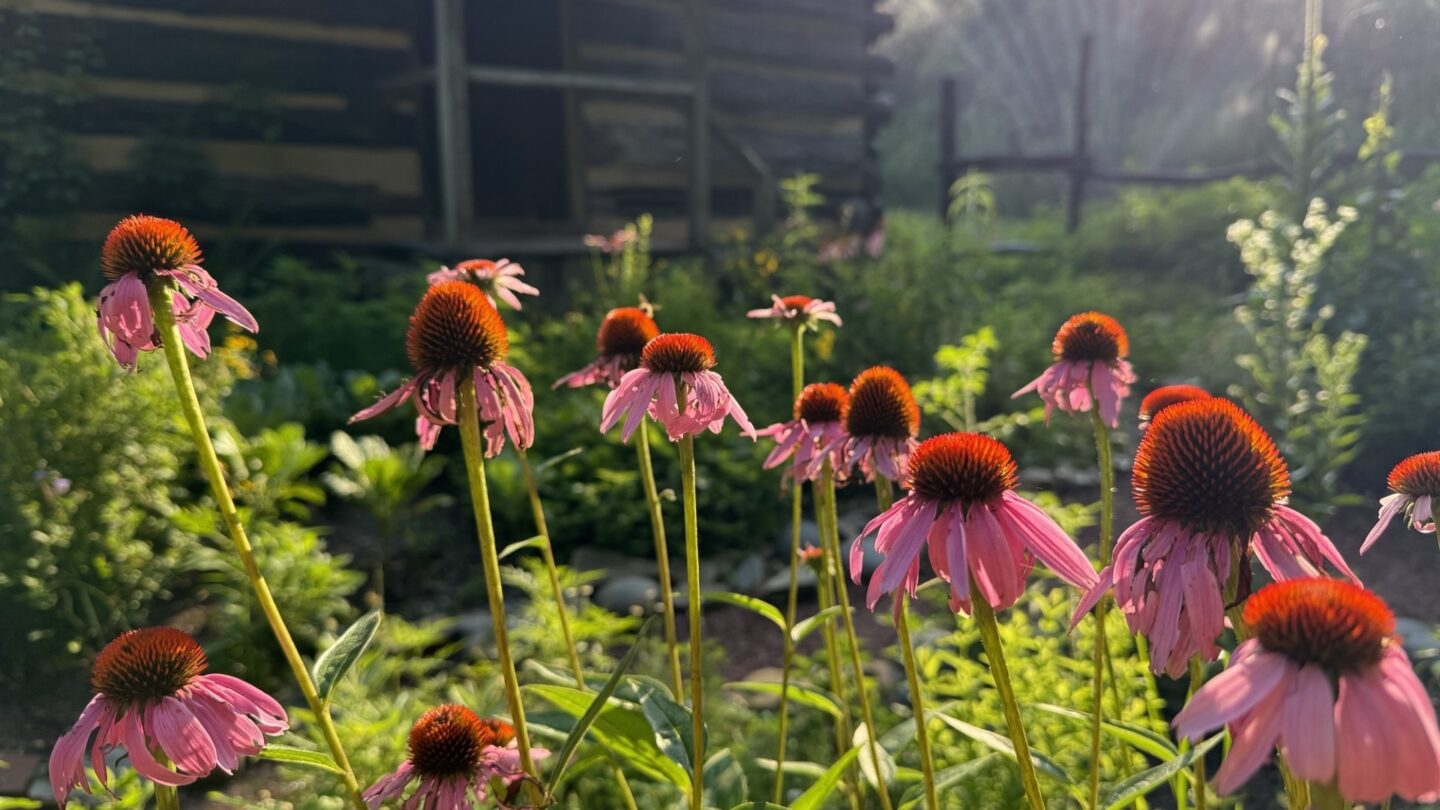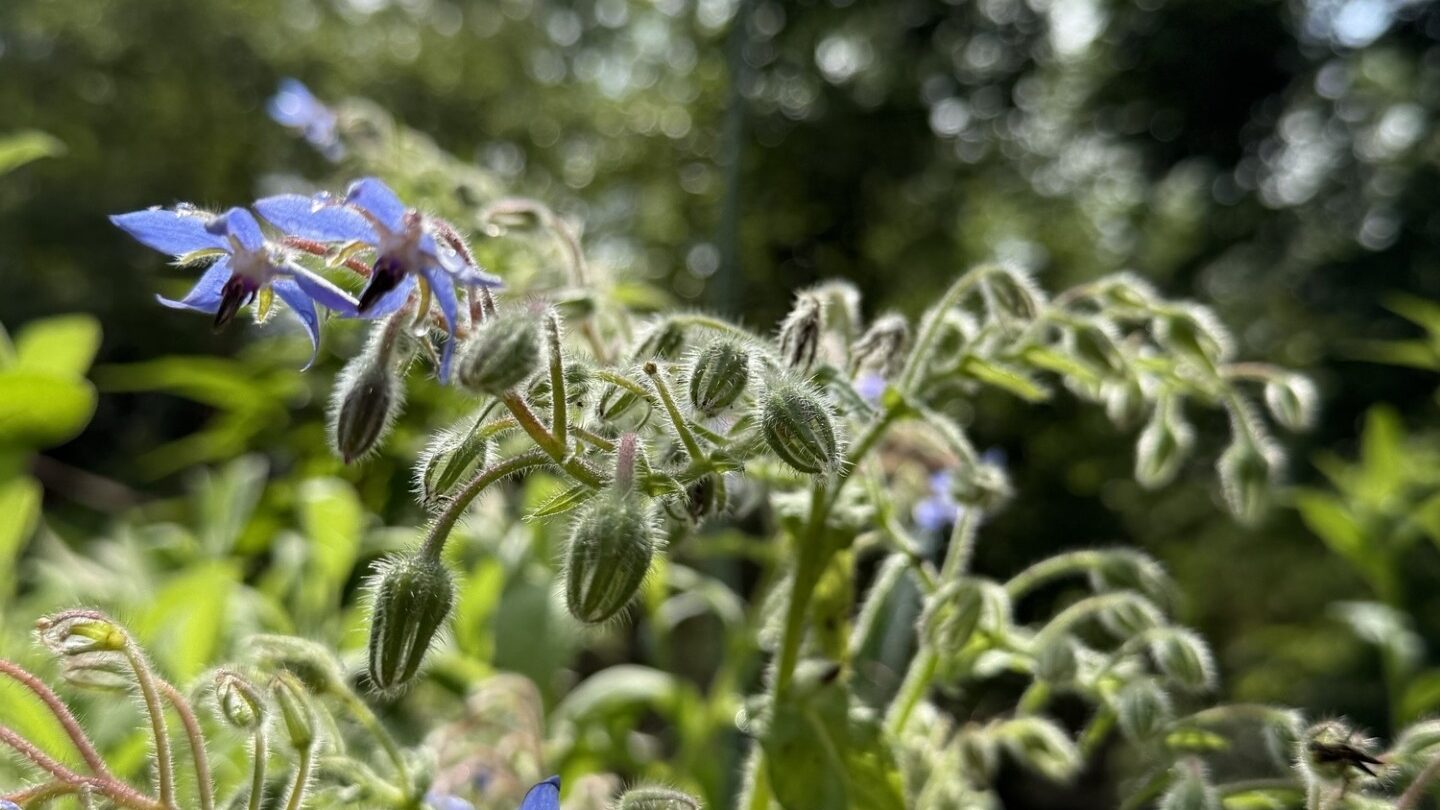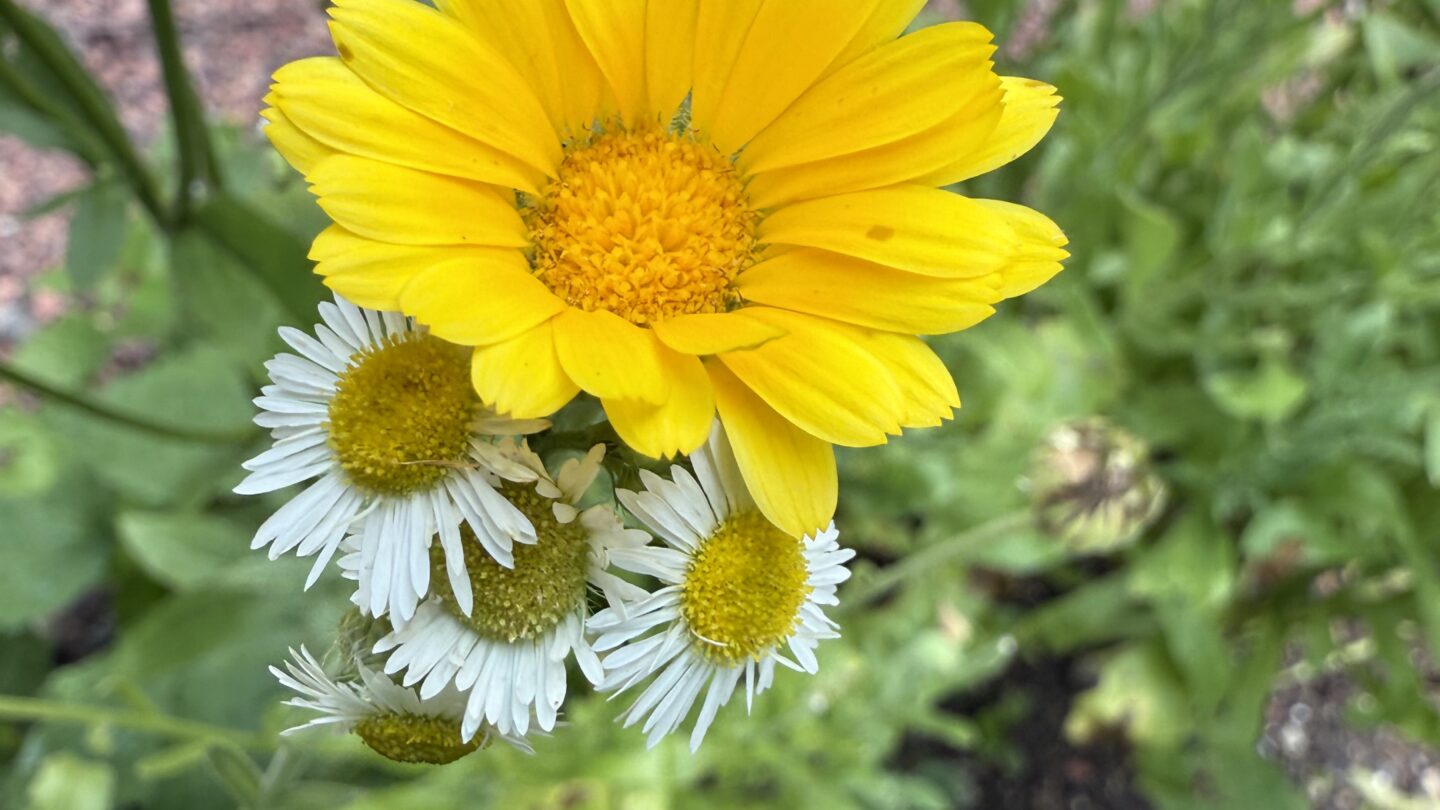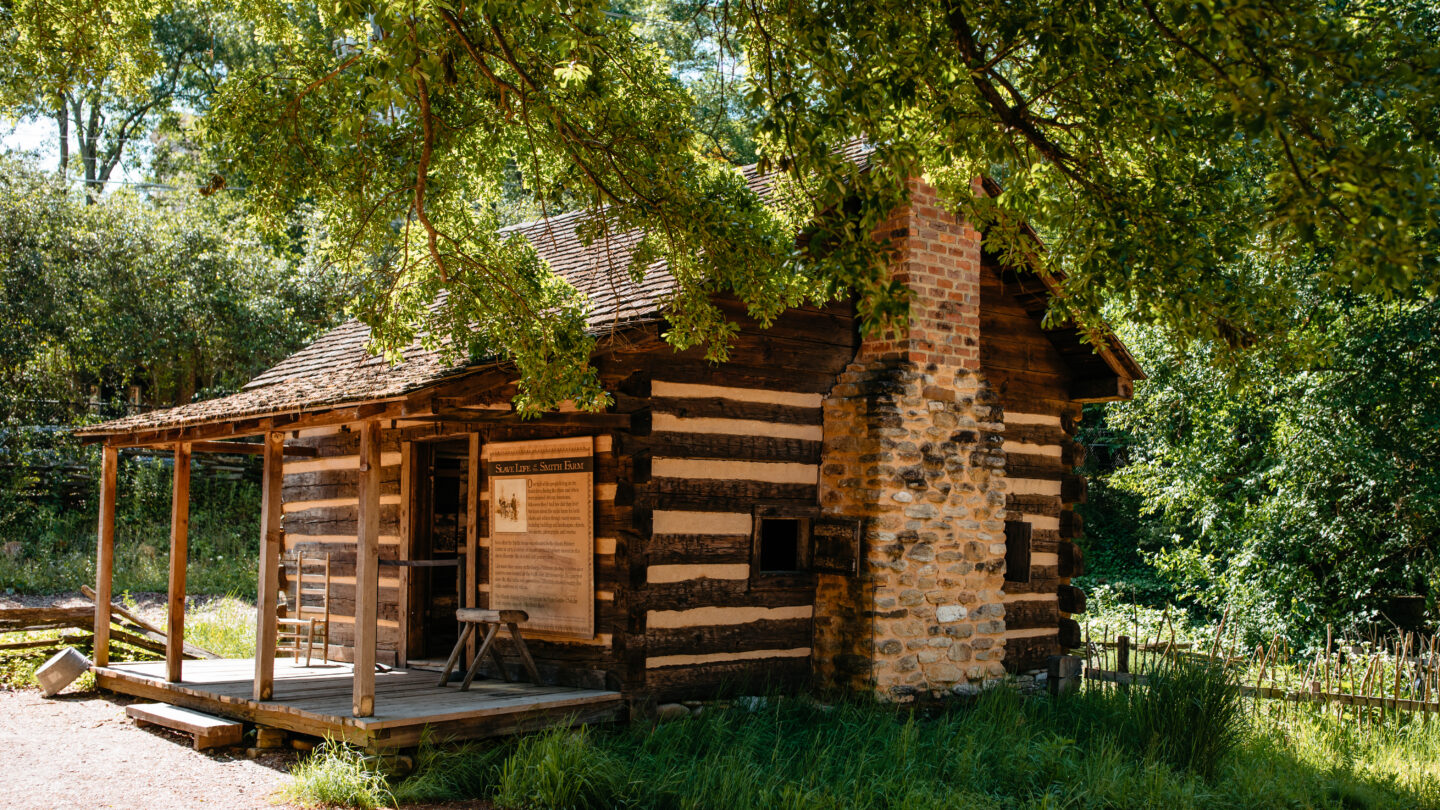
Around a dozen enslaved people lived on Smith Farm from 1850-1860, according to the census. They would have lived in a cabin behind the Smith family house. The original structures didn’t survive into the 1960s when the family house was moved to our property, so a similar cabin, estimated to have been built in the 1850s, was moved onto our campus in 1973 from an area about 20 miles southeast of downtown Atlanta.
We use this space to interpret the stories of the enslaved people in Georgia – their daily lives, the communities and culture they formed, the cruelty and mistreatment they faced, and their acts of resistance.
Enslaved People’s Garden
When you walk off the back porch of the cabin, you’ll enter a recreation of what enslaved gardening may have looked like. Our Gardens Team has cultivated and interpreted this special place for ten-plus years as a way to showcase this vital and often marginalized history. Research assistance to create this space was often provided by the excellent teams at both the Kenan Research Center and the Cherokee Garden Library.
On some farms and plantations where chattel slavery took place, like the Smith Farm, enslaved communities were able to tend their own gardens for use by their communities.
Enslaved gardeners worked tirelessly in the pre-dawn and evening hours to tend these green spaces for their loved one’s survival, means to resist their oppression, and to express themselves culturally.
For example, medicinal plants like Echinacea, Boneset, and Mullein allowed for community medical care. Fast growing and nutritious West-African heirlooms, like Black-Eyed Peas and Okra, kept newly freed peoples fed in the immediate, and often economically harsh, years of the postwar South. Enslaved gardeners even bred a plethora of heirlooms such as Fish Pepper and Odell’s Large White Watermelon. Both of which are still in circulation today and can often be found during the Summer months in our garden.
These green spaces represent generations of agricultural and horticultural knowledge in the most difficult of circumstances.
Explore. More.
-
Story
Atlanta History Center is excited to partner with Black in the Garden for a special four-part podcast series exploring Gardens and Cultural Landscapes of Black America, the new digital collection from Cherokee Garden Library. Host Colah B Tawkin explains how this partnership came to be.
-
Story
For African Americans, Juneteenth commemorates the final liberation of their ancestors who were enslaved. Why not honor that historic day by planting an Emancipation Garden? An Emancipation Garden is a refreshing way to nourish body and soul, recreate and remember the foodways of African Americans in the South, and celebrate the freedom of the formerly enslaved.
-
Story
On April 10, 1972, Smith Farm opened to the public in a highly publicized event during Atlanta’s Dogwood Festival. A unique project, especially in its time, Smith Farm attracted widespread media attention in both local and national press. 50 years later, Smith Farm is many things: historical time machine to discussing Georgia before, during, and after the Civil War for people both enslaved and free, a story of historic preservation and women’s volunteer efforts, and most of all, an educational cornerstone of the Southeast’s largest history museum.
-
Buildings & Grounds
Explore highlights of Southeastern horticultural history by taking in 33 acres of enchanting gardens, woodlands, and trails.
